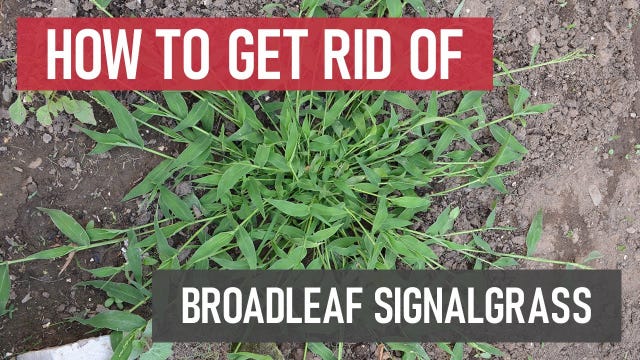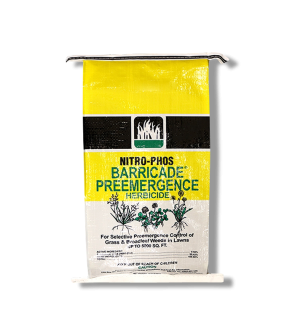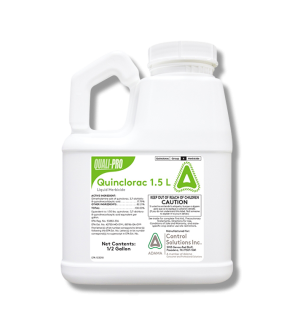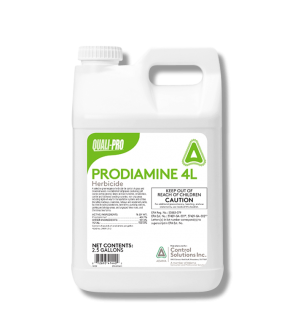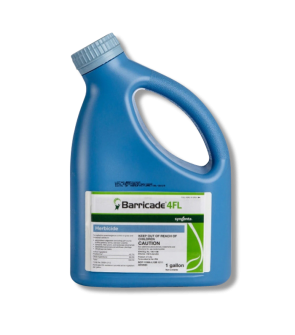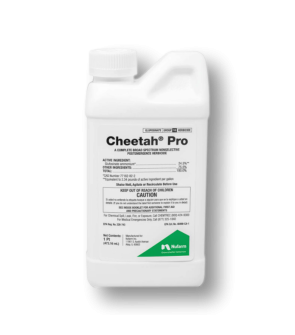Gain access to personalized product screening, the best pricing, rewards, and more!
Most Effective Products
Broadleaf Signalgrass Control: How To Get Rid of Broadleaf Signalgrass
This page is a general DIY guide for controlling broadleaf signalgrass. Using the products and methods suggested, you get control of broadleaf signalgrass. Follow this DIY article and use the recommended products, and we guarantee 100% control of broadleaf signalgrass.
Broadleaf signalgrass is a summer annual grassy weed that appears similar to large crabgrass but is a problematic weed species of its own.
This weed is primarily a problem in agricultural areas, especially where corn is grown, and can significantly reduce yields. On a residential lawn, broadleaf signalgrass tends to spread very quickly and can overtake a lawn with its presence.
If you want to remove broadleaf signalgrass from your property, our easy DIY treatment guide will show you how to eliminate this grassy weed permanently. Follow the step-by-step instructions below using the recommended herbicides to the right and you will successfully remove broadleaf signalgrass for good.
Identification
Before proceeding with a treatment program, you must be certain you are dealing with a broadleaf signalgrass infestation. Careless identification can lead to using the wrong treatment methods, which can be a waste of time and money. Below are the following characteristics to help you understand what broadleaf signalgrass looks like.

- Broadleaf signalgrass is a grassy weed with long stems and short, wide leaf blades. The leaf blades grow up to 6 inches in length and up to 15 millimeters wide, and they are hairless on both the upper-facing and lower-facing surfaces. When mature, the stems grow 3 feet long, forming large rosette clumps.
- During this weed's seedling stage, its grass blades will appear maroon-tinged and resemble signal flags. As broadleaf signalgrass matures, it will become semi-prostrate to the ground, with the tips ascending upwards.
- When this plant flowers, each seedhead it produces grows 2 to 6 branches up to 3 and a half inches long.
- Broadleaf signalgrass is often confused with crabgrass, but the hairs on its leaves can differentiate it. Crabgrass will be hairy on the upper leaf surface whereas broadleaf signalgrass will not have any hairs except at the margins and collars.
Use the above description and image to help you identify broadleaf signalgrass on your lawn. When you're unsure or can't pinpoint exactly which weed you are encountering in your yard, turn to the experts to identify the weed for you.
Inspection
Once it is confirmed that you are dealing with broadleaf signalgrass, you can move on to inspection. During this phase, you will locate areas where broadleaf signalgrass is thriving and observe the conditions allowing it to thrive. This information will help you in knowing where to focus your herbicide application.

Where to Inspect
Broadleaf signalgrass is commonly found in Tennessee but can also be located throughout the southeastern half of the United States.
It prefers to grow in loamy to sandy soils with good drainage. It can handle full sun or partially shaded areas.
Common sites where this weed occurs include roadsides, agricultural fields, ditches, and other disturbed areas.
What To Look For
The short and broadleaf leaves of broadleaf signalgrass will make it easily stand out among turf and other areas. Younger broadleaf signalgrass blades will have a maroon tinge on the blades.
Treatment
When handling any herbicide, you are properly protecting your skin and eyes with safety equipment (Goggles, gloves, and long-sleeved clothing)
To eliminate broadleaf signalgrass in lawns, we recommend using a post-emergent herbicide such as Quinclorac 1.5 L. Be sure to read the label to determine if your turf type is tolerable to this product.
Step 1: Mix and Apply Quinclorac 1.5 L
 Quinclorac 1.5 L is an effective post-emergent herbicide that ensures fast control of broadleaf and grassy weeds, such as broadleaf signalgrass, in residential lawns and other terrains.
Quinclorac 1.5 L is an effective post-emergent herbicide that ensures fast control of broadleaf and grassy weeds, such as broadleaf signalgrass, in residential lawns and other terrains.
Determine how much Quinclorac 1.5 L to use by measuring the square footage of the treatment area. To do this, measure the length and width of the treatment area in feet, then multiply them together (length X width = square footage).
To control broadleaf signalgrass in turf as a spot treatment, use 1.45 fl. Oz. of Quinclorac 1.5 L per 0.5 gallons of water per 1,000 sq. ft.
Mix and apply this product with a backpack sprayer or handheld pump sprayer.
Add half of the appropriate amount of water, then fill with the measured amount of Quinclorac 1.5 L. Lastly, add the remaining half of water. Secure the lid and agitate until evenly mixed.
Step 2: Reapply if Needed
Adjust your sprayer nozzle to a fan tip setting, then spray the top and bottom of broadleaf signalgrass leaves until evenly coated. Do not spray to the point of runoff.
Under certain conditions, an application of Quinclorac 1.5 L to annual grasses at 2 to 4 tillers may not provide complete control. In these situations, a sequential application will be required for grass control.
Reapplication intervals for this application of Quinclorac 1.5 L range from 14 to 21 days after the initial treatment.
Do not apply to Bahiagrass, carpetgrass, St. Augustinegrass, centipedegrass, dichondra, lawns, or turf where desirable clovers are present.
Prevention
Once broadleaf signalgrass has been eliminated from your property; you will need to implement some preventative measures to ensure that this weed does not return.
- Broadleaf signalgrass will take a bit of persistence to get rid of it completely, but if you successfully remove it, you don't want it to return. Prevent broadleaf signalgrass from growing with the help of a pre-emergent like Barricade Pre-Emergent Herbicide Prodiamine Granular. Depending on your turf grass species, you must apply 1.5 to 4 pounds of product per 1,000 square feet. After application, water in the product should be at least half an inch. An additional application may be made after 6 months for year-round weed prevention.
- In addition to pre-emergent herbicides, we also recommend you promote the health of your turf to reduce the conducive conditions that allow weeds and disease to take hold. Mow your grass at proper intervals to maintain a thick growing density. A lawn dense with taller trimmed grass can better choke out weeds and prevent them from establishing.
- Reduce the shade cast on your lawn by trimming overgrown shrubbery and tree branches, raking away leaf litter and picking up any debris, and employing a proper watering schedule to provide the local grass with enough water to strengthen its roots but not so much that it encourages weeds. Many grasses require 1 inch of water every week. Apply the water all at once in the morning so it has time to seep into the ground without evaporating in the sun.
Key Takeaways
What is Broadleaf Signalgrass
- Broadleaf signalgrass is a summer annual grass that grows vigorously from May to October.
How to Get Rid of Broadleaf Signalgrass
- We recommend using either a post-emergent herbicide such as Quinclorac 1.5 L to remove broadleaf signalgrass.
Preventing Broadleaf Signalgrass Reinfestations
- Prevent the reappearance of broadleaf signalgrass by applying Barricade Pre-Emergent Herbicide Prodiamine Granular in the fall and maintenance practices that promote a healthy, nutrient-rich turf that will make it hard for the weed to establish.
-
-
-
-
-
-
-
-
-
HOWARD JOHNSON ENTERPRISESCrabgrass Control Plus 0-0-7 w/ 0.37% Prodiamine Herbicide$27.88 - $27.88






